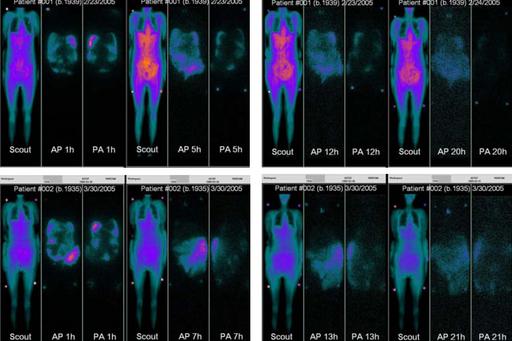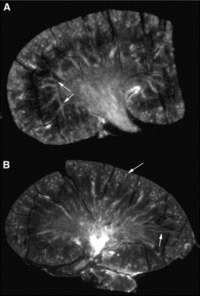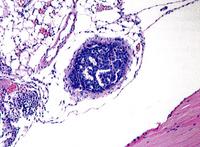TAT-Imaging
Short description
Different imaging techniques is repeatedly used in the research and gives important additional information regarding for example the distribution of radioactivity in tissues. Below is listed the imaging techniques use by the Targeted Alpha Therapy Group.
Alpha Camera Imaging
This newly developed technique by Tom Bäck makes it possible to image and pin-point the location of the alpha particles emitted by for example 211At and 213Bi in in vivo samples, with a resolution of ~20 µm.
Fluorescence Microscopy
This technique has been used when in radiobiological studies when investigating the appearance of double-strand breaks in irradiated cell nuclei. Breaks are visualized by labeling of gamma-H2AX foci, emerging within minutes at the site of DNA breaks.
Light Microscopy
This technique is used on a regular basis when for example investigating the presence of microscopic tumors in hematoxylin/eosin coloured tissue samples in our therapy studies.
Scanning Electron Microscopy (SEM)
This technique has been used in some studies when for example investigating the relationship between the estimated absorbed dose to differently sized small tumors and the therapeutic efficacy.
Transmission Electron Microscopy (TEM)
This technique has been used occasionally when investigating how the ovarian tumor cells for example are attached to the peritoneal lining during studies of the therapetic efficacy.
Scintigraphy/CT/SPECT-CT
Various standard nuclear-medicine imaging techniqes have been utilized in for example the phase I study to image the localization of radioactivity in the body.




- Confocal Microscopy (External link)
- Fluorescence Microscopy (External link)
- Imaging and Microscopy (External link)
- Imaging in Medicine (External link)
- Lennart Nilsson Photography (External link)
- Microscopy Society of America (External link)
- Microscopyu.com (External link)
- RadiologyInfo.org (External link)